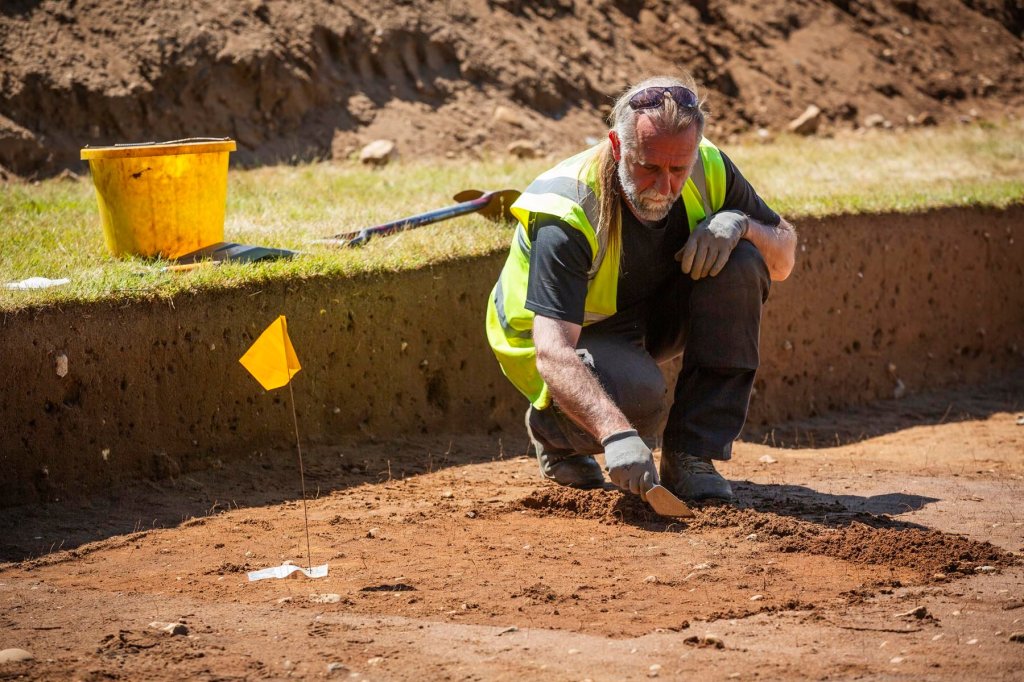Archaeologists recently revealed the goals of a multiple 1,500-year-old bucket in one of England’s most historic places and was not pleasant.
The National Trust issued a state regarding the Byzantine bucket Bromeswell, found in Sutton Hoo, in May.
The area of two ancient Anglo-Saxon cemeteries, Sutton Hoo has offered a rich knowledge of the British history of pre-standard since its first excavation in 1938.
During an excavation last summer, archaeologists discovered the basis of Bromeswell’s bucket, dating from the 6th century.
Various buckets of buckets were discovered in past excavations, but this latest discovery gives birth scholars more to study.
With the hand -based, researchers quickly went to work to analyze the object with a variety of techniques, including computerized tomography, CT scans and X -rays and they found an answer.
In a morbid twist of events, experts learned that the bucket was used to keep the created remnants of an important person and their serious goods.
“Human celebrated bonnes and discovered animals confirmed that the finding was used as a cream container,” noted national faith.
The organization added, “created human goods include parts of a talus and fragments of a skull safe (the top of the skull protecting the brain).”
The bucket dates back to the 500s.
It is decorated with a hunting scene describing men armed with swords and shields, as well as dogs and lions – painting a small picture of life in the past.
“The latest fragments include legs, paws, shield base and even lost face of one of the men,” the state described.
It is believed that the bucket came from Antioch in the Byzantine Empire, now located in modern Turkey.
The National Trust noted, “Form the letters used within the bucket model suggest that it was done in the 6th century, meaning that he was already 100 years old when he arrives here in Sutton Hoo.”
The researchers also found “a mystery object” that turned out to be a two -sided comb made of an antler. It is interesting that the object was not burned.
The National Trust said the presence of the comb suggests that the Anglo-Saxons took it seriously, as the combs were found in male and female burials.

“A little less romantically, the combs would also be useful in the control of lice,” the statement said.
“Although man’s good in creams cannot sex, it is hoped that the ancient DNA from the owner can survive in the comb, and the analysis can reveal more about them.”
The national confidence archaeologist Angus Wainwright said he was “hope”, future research will reveal a new overview of “this very special burial”.
“We know that this bucket would have been a rare and precious possession in Anglo-Saxon times, but it has always been a mystery why it was buried,” Wainwright said.
“Now we know that it has been used to contain the remains of an important person in the Sutton Hoo community.”
Anglo-Saxon Hellenic Geake’s expert told the Trust National Trust of Bromeswell’s bucket of bucket is finally resolved.
“Now we know that it is the first of these rare objects that is sometimes used in a burial of creams,” she said.
“It’s an extraordinary mix – a ship from the southern world, the classic that contains the remains of a very northern, very German celebration.”
She also said that the finding “epitomizes the strangeness” of Sutton Hoo, who has amazed enthusiasts of British history for decades.
“There are boots of boats, horse bury, noisy burial and now the baths of the bathroom,” Geake noted.
“Who knows what else?”
#Archaeologists #solve #gloomy #mystery #1500yearold #bucket #historical #site #tourists
Image Source : nypost.com